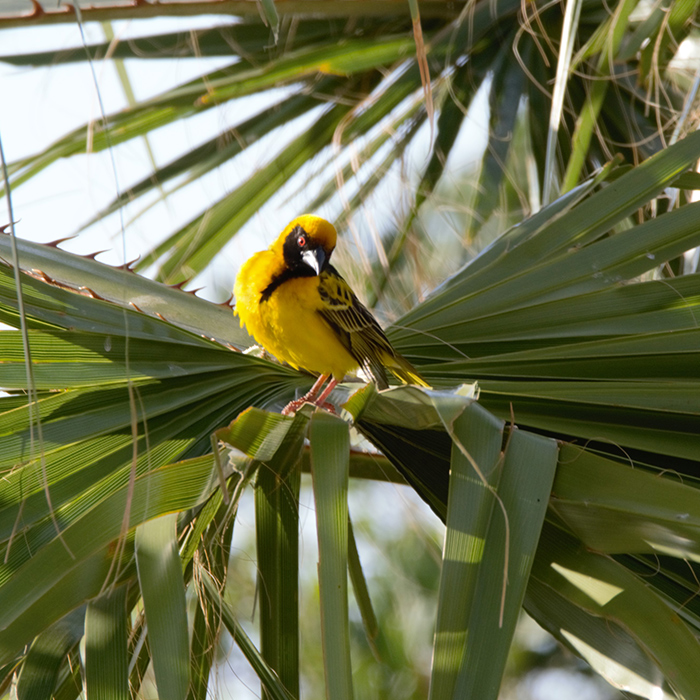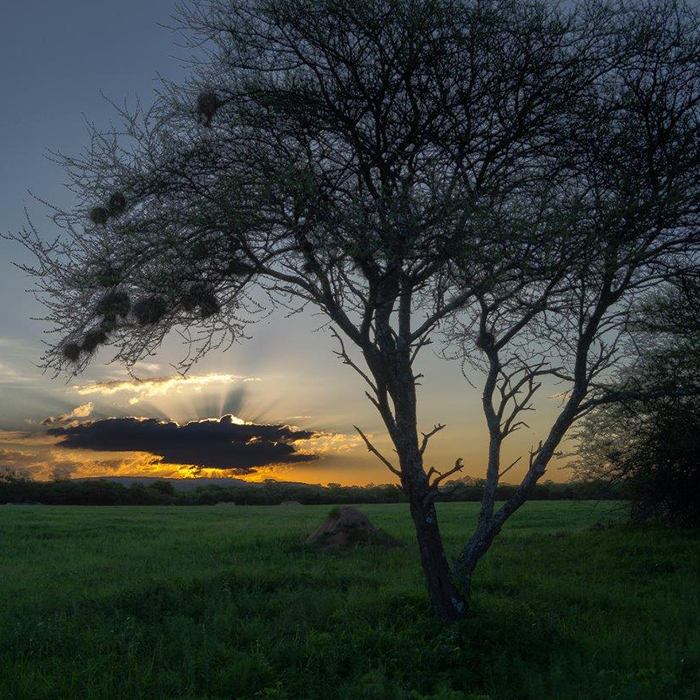More than 400 types of birds have been recorded at Die Boer & Die Belg of which some are rare species. The amount of bird species here is due to the water-rich areas on the farm. African Cuckoo Hawk / Koekoekvalk. An unusual find is the yellow variation of the Crimson‐breasted Shrike (Geel Rooiborslaksman). The yellow version of this shrike is very rare. The Bee-eater Bird (Meropidae) has also been spotted.
Welcome To Our Garden
Bird Watching
Game
There is also a six-hectare open ‘veld’, which seems to be the “meeting place” of most of the species of buck in the late afternoon. The blue wildebeest, kudu, zebras, impalas and blesbok (and occasionally nyalas) can be seen lazily walking around and grazing on the lush grass on this open field as the sunsets. We also have zebras, giraffes and many other African wild life species.
Die Boer & Die Belg has a variety of grasses and vegetation and includes sweet grass, sour grass, a large variety of trees and wetland areas. It is one of the most water-rich farms in the area and boreholes on the farm can provide more than 300 000 litres of water daily. There is a fairly large natural fountain as well as two smaller natural fountains (these two are ironically close to the ‘desert’ area).
When driving around the farm, it is interesting to see how the vegetation changes from one area to the next – from ‘forest-like’ areas to grass and thorn-tree areas, then wetland areas through to the very sparse vegetation of the ‘desert’.
One of the largest River Bush Willows in South Africa can be found at Die Boer & Die Belg. Even though it is very difficult to determine this amazing tree’s actual age, it is believed to be between 150 and 200 years old.
There are approximately 77 different tree species at Die Boer & Die Belg. These species are mostly Acacia and Combretum trees. Other species include Vaalboom (Terminalia sericea) and Wild Pear (Dombeya rotundifolia), which are the first trees to blossom in the veld, Shepherd’s tree (Boscia Albitrunca) Witgat in Afrikaans and the Marula (Sclerocarya birrea).
Die Boer & Die Belg has a variety of grasses and vegetation and includes sweet grass, sour grass, a large variety of trees and wetland areas. It is one of the most water-rich farms in the area and boreholes on the farm can provide more than 300 000 litres of water daily. There is a fairly large natural fountain as well as two smaller natural fountains (these two are ironically close to the ‘desert’ area).
When driving around the farm, it is interesting to see how the vegetation changes from one area to the next – from ‘forest-like’ areas to grass and thorn-tree areas, then wetland areas through to the very sparse vegetation of the ‘desert’.
One of the largest River Bush Willows in South Africa can be found at Die Boer & Die Belg. Even though it is very difficult to determine this amazing tree’s actual age, it is believed to be between 150 and 200 years old.
There are approximately 77 different tree species at Die Boer & Die Belg. These species are mostly Acacia and Combretum trees. Other species include Vaalboom (Terminalia sericea) and Wild Pear (Dombeya rotundifolia), which are the first trees to blossom in the veld, Shepherd’s tree (Boscia Albitrunca) Witgat in Afrikaans and the Marula (Sclerocarya birrea).
















